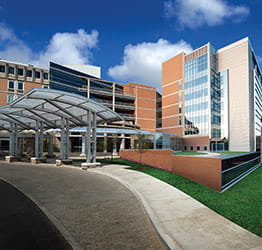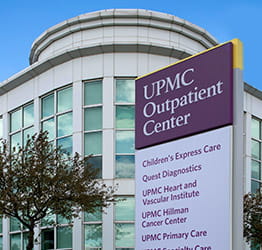Strokes can be caused by bleeding into the brain or a blood clot reducing blood flow to the brain. Often, the cause of a stroke is identified during the initial workup. However, a cryptogenic stroke is a stroke where the cause has not been found.
If you have a cryptogenic stroke, your doctor may need to do additional testing to look for a hidden cause.
At UPMC, our team of neurologists, cardiologists, electrophysiologic, and other medical experts will work together to find the cause of your cryptogenic stroke. Your team will work with you to develop a treatment plan to reduce your risk of a second stroke.
On this page
What Is Cryptogenic Stroke?
A cryptogenic stroke is a type of ischemic stroke that occurs with no known cause. It is possible that the cause could be found with further investigation. Some strokes will remain cryptogenic even after extensive investigations.
What causes cryptogenic stroke?
If your doctor can’t find signs of a blood clot or bleeding in your brain that is causing your stroke, they may look for other causes, including:
- Atrial fibrillation (AFib) — An irregular heart rhythm that increases stroke risk. Your doctor may need to monitor your heart rhythm over time to find out if you have AFib.
- Blood clotting disorders — Can cause blood clots to form in your brain or in other parts of your body.
- Large artery atherosclerosis — Hardening of your arteries due to plaque that collects on your artery walls.
- Patent foramen ovale (PFO) — A hole between the chambers of your heart that can cause blood clots to travel to your brain.
What are cryptogenic complications?
A cryptogenic stroke is a medical emergency that happens when blood flow is cut off to a portion of the brain. Without blood flow, brain tissue can die within three to four minutes.
Cryptogenic stroke requires fast treatment to reduce the risk of disability and death. If left untreated, cryptogenic stroke can cause death or permanent loss or impairment of function controlled by the affected part of your brain.
How can I prevent cryptogenic stroke?
You may not be able to control some of your cryptogenic stroke risk factors, such as aging. However, managing known risk factors for heart disease and stroke can reduce the risk that you will have a stroke.
You may be able to reduce your risk by:
- Eating a diet that is rich in fruits, vegetables, and whole grains.
- Exercising and maintaining a healthy weight.
- Maintaining normal blood pressure and cholesterol levels.
- Limiting alcoholic beverages.
- Stopping smoking.
How common is cryptogenic stroke?
The American Stroke Association estimates that about one-third of all ischemic strokes are cryptogenic.
Back to top.
What Are the Signs and Symptoms of Cryptogenic Stroke?
The signs and symptoms of cryptogenic stroke are the same as other types of stroke.
The symptoms usually occur suddenly and may include:
- Difficulty walking or moving.
- Dizziness.
- Loss of consciousness or seizure.
- Nausea or vomiting.
- Numbness or weakness in your face or limbs that may affect only one side of your body.
- Problems with balance or coordination.
- Severe headache.
- Trouble speaking or understanding.
- Vision problems in one or both eyes.
When should I see a doctor about my cryptogenic stroke symptoms?
A stroke is life-threatening and needs emergency treatment. If you have symptoms of a stroke, dial 911 right away — don’t wait. Getting fast treatment can reduce your risk of disability and death.
Back to top.
How Do You Diagnose Cryptogenic Stroke?
If you are experiencing stroke symptoms and your doctors can’t immediately find a blood clot or bleeding in your brain, your care team may order different tests to look for hidden causes.
What to expect during your visit
When you arrive at the hospital, your doctor will:
- Perform a physical exam.
- Order imaging or other tests.
- Review your health history and medications.
Tests to diagnose cryptogenic stroke
Your doctor may request imaging tests to examine how blood flows through the blood vessels in your brain and check for signs of cryptogenic stroke. Your doctor may also order additional tests to rule out other conditions that can cause a stroke.
Diagnostic tests for cryptogenic stroke include:
- Blood tests — Your doctor may order blood tests to look for blood-clotting disorders and other problems that may cause stroke.
- CT or MR angiogram — Also known as arteriography or an arteriogram, this test uses x-rays or magnets and a special contrast dye to look for problems with your blood vessels.
- CT scan — A test that creates images of your brain and is used to diagnose stroke, brain aneurysm, or another type of brain injury.
- Doppler ultrasound — A noninvasive test that uses ultrasound waves to measure blood flow through your arteries and veins.
- Echocardiogram — A noninvasive imaging test that uses ultrasound waves to check for problems with your heart’s structure or function.
- Electrocardiogram (EKG) — A test that monitors the electrical activity of your heart to check for abnormal heart rhythms.
- MRI — Uses a combination of large magnets, radio frequencies, and a computer to produce detailed images of your brain.
- Prolonged heart rate monitoring — Longer test to look for atrial fibrillation as a cause of stroke.
Cryptogenic stroke prognosis
Cryptogenic stroke is a life-threatening condition. Your prognosis after a cryptogenic stroke will depend on the severity of your stroke, what part of your brain is affected, and how quickly you receive medical care.
Your doctor will also try to find the cause of your cryptogenic stroke, so you may need additional testing and follow-up care even after you receive emergency care. Knowing what caused your stroke can help your doctor develop a treatment plan to reduce your risk of a second stroke.
What can I expect for cryptogenic stroke recovery?
Your recovery after a cryptogenic stroke will depend on the amount of brain damage you experienced and the symptoms you have. Some people have no deficits after a stroke and can resume their normal activities, but others experience severe side effects that cause loss of independence.
Side effects after stroke may include:
- Cognitive problems with thinking, reasoning, or judgment.
- Difficulty swallowing, speaking, or understanding speech.
- Incontinence.
- Memory problems.
- Mood disorders, such as depression, anxiety, or mood swings.
- Pain, numbness, or tingling.
- Problems with balance or coordination.
- Trouble regulating emotions and emotional outbursts.
- Vision problems.
- Weakness, paralysis, or problems with movement.
You may need inpatient or outpatient physical, occupational, or speech therapy after your stroke to help improve or manage side effects. Some people may experience improvement in their side effects over time as their brain begins to heal, but other people may have permanent disability.
Back to top.
How Do You Treat Cryptogenic Stroke?
The goals of cryptogenic stroke acute treatment are to restore blood flow and prevent permanent brain damage that can lead to disability and death.
The acute treatment for cryptogenic stroke depends on:
- The location, extent, and duration of your stroke.
- Your overall condition.
Treatment may include:
Medication to treat cryptogenic stroke
Your doctor may administer emergency medications to treat cryptogenic stroke and related symptoms, including:
- Thrombolytics or fibrinolytics — Known as clot-busting medications, these drugs dissolve blood clots that cause blocked arteries in your brain. A common medication is called tissue plasminogen activator (tPA). To be effective, these medications must be given within a few hours of the start of your stroke symptoms.
- Neuroprotective medications — These medications protect your brain from damage caused by lack of oxygen.
- Anti-inflammatory medications — These medications help to control brain swelling.
Medication for recurrent stroke prevention
After you receive emergency care for cryptogenic stroke, your doctor may prescribe other medications for you to take on a short- or long-term basis to reduce your risk of a second stroke, including:
- Antiplatelet medications, such as aspirin and clopidogrel.
- Blood pressure medications, such as diuretics and beta blockers.
- Blood-thinners (anticoagulants), such as warfarin or direct oral anticoagulants like Rivaroxaban, Apixaban, or Dabigatran.
Surgical treatment for cryptogenic stroke
If your cryptogenic stroke is caused by an underlying condition, your doctor may recommend surgical treatments to reduce your risk of a future stroke, including:
- Angioplasty and stenting — A minimally invasive procedure that uses a thin, flexible tube called a catheter to remove a blockage from your artery. After the blockage is removed, your doctor will insert a device called a stent to hold your artery open.
- Left atrial appendage (LAA) closure — A minimally invasive procedure to block the left atrial appendage of your heart, where blood clots commonly form when you have atrial fibrillation. LAA closure involves placing a device to prevent blood clots from traveling from your left atrial appendage to your brain.
- PFO closure — A minimally invasive procedure to close the hole between the chambers of your heart.
Back to top.
Why Choose UPMC for Cryptogenic Stroke Care?
When you choose UPMC for cryptogenic stroke care, you will receive:
- Access to world-class neuroscience expertise — Our world-renowned experts diagnose and treat all types of stroke using the latest tools and techniques.
- A full range of treatment options — We offer nonsurgical care, as well as minimally invasive and traditional open surgical procedures, allowing us to effectively treat all types of stroke while reducing your risk of complications.
- Multidisciplinary care — We partner with neurologists, cardiologists, electrophysiologists, rehabilitation specialists, and other medical experts to provide complete care that optimizes your recovery and quality of life.
Back to top.
By UPMC Editorial Staff. Last reviewed on 2025-10-23.
















